Annual performance appraisals aren’t dying. They’re already dead.
It’s 2025. Evaluating an employee’s performance just once per year doesn’t cut it.
Effective performance management strategies aren’t built on infrequent actions.
They’re built on regular, consistent feedback.
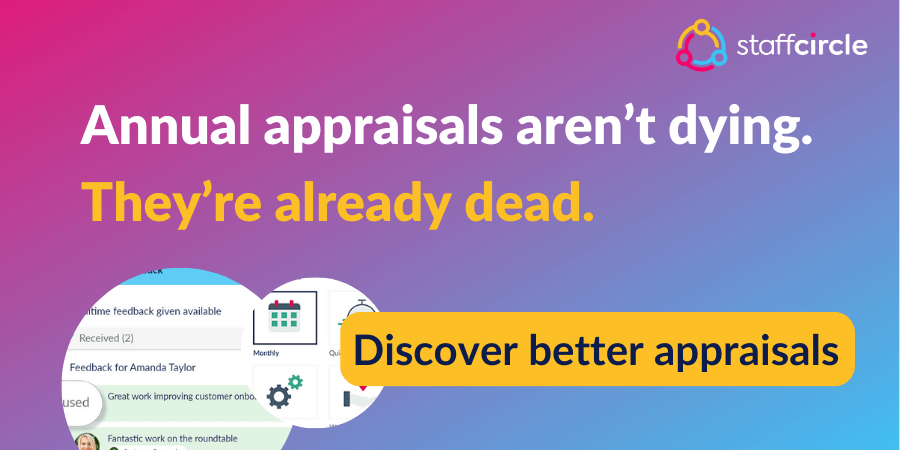
Aren’t you tired of traditional reviews?
Creating lengthy appraisal forms to cover every eventuality of annual progress? Sending multiple reminders about every appraisal meeting deadline? Collating hundreds of feedback forms into generic reports?
HR leaders tell us that their annual appraisal methods can take weeks or even months to complete.
It’s 2025: performance reviews shouldn’t be this time-consuming, right?
Appraisals should be beneficial for employees, managers and leaders. Not a laborious box-ticking exercise.
There’s a better way.
Continous 360 appraisal systems are your key to making performance management more productive.
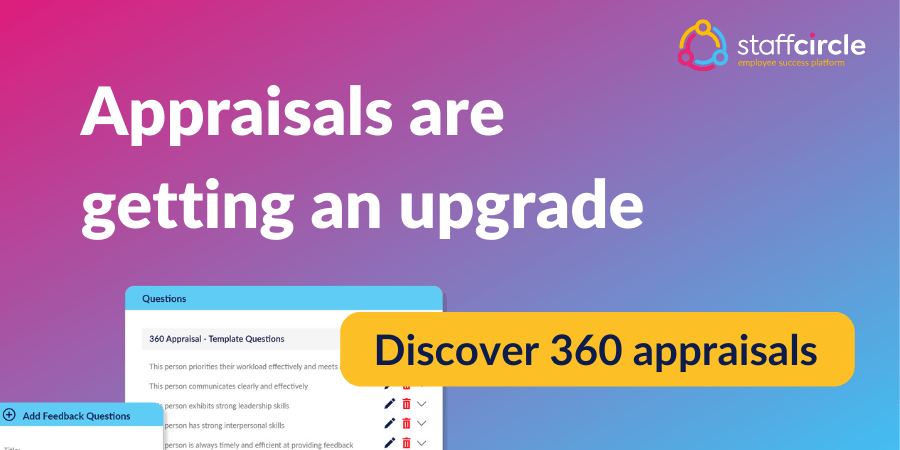
Appraisals are Different in 2025
In an ever-changing hybrid workforce, the traditional once-per-year appraisal system doesn’t cut it.
Teams are distributed, communication has gone digital, and the old ways of working are no longer effective.
Businesses are moving away from a static annual performance appraisal process. They’re clunky, inflexible and provide no true value for employees.
Instead, top employers are shifting to a continuous appraisal process.
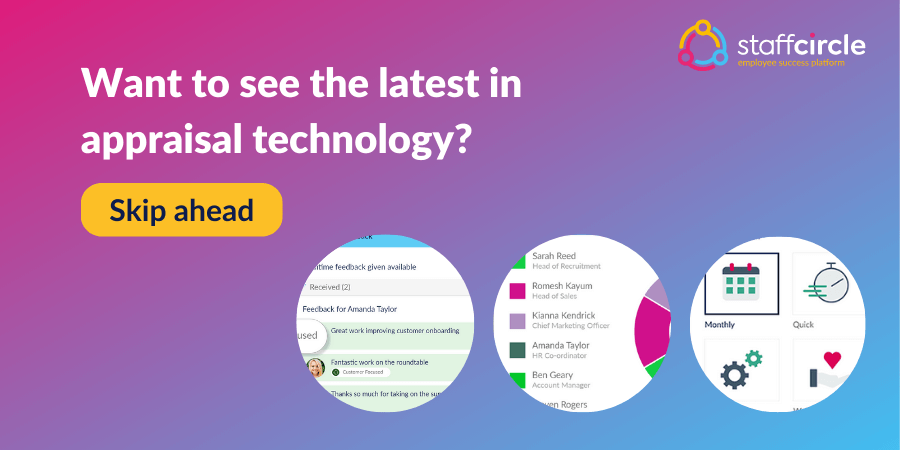
Performance Management is Going Paperless
Underpinning the traditional review process is a mountain of paperwork.
Lengthy annual review forms, that try to recap an entire year of individual performance.
Thousands of sheets of paper that need to be completed, collated and collected.
Filed away in a cabinet, never to be reviewed again.
But the paperless performance management process of 2025 is different.
Successful businesses are going paperless to remove admin hours. Reduce environmental waste. Improve performance insight with a centralised, accessible platform.
Top performing businesses are switching to StaffCircle.
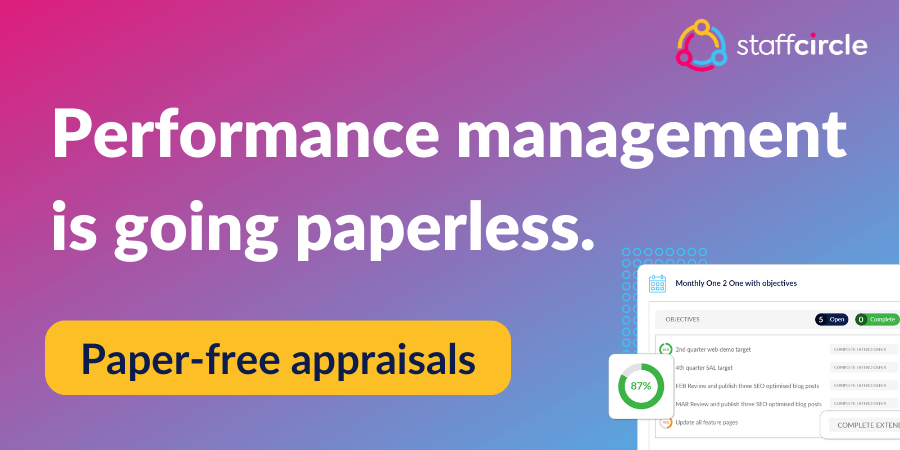
The Problem With Annual Appraisals
Traditional performance reviews have been the standard for decades. Once per year, employees sit down with their manager to look back at their achievements.
They’re often bundled with discussion around pay increases, promotions or development.
It’s a daunting process: how do you sum up a year of progress in one hour?
It’s impossible. The end result doesn’t benefit anyone.
- Employees aren’t truly engaged with their own progress
- Managers don’t know how effective they are at team building
- Leaders have no oversight on the workforce as a whole
Not to mention the high levels of admin required.
Mass scheduling appraisal meetings. Chasing busy managers for feedback. Collating hundreds of appraisal forms.
Sound familiar? It’s a huge task for HR teams, spanning weeks or months.
But you can make annual employee appraisals simple.
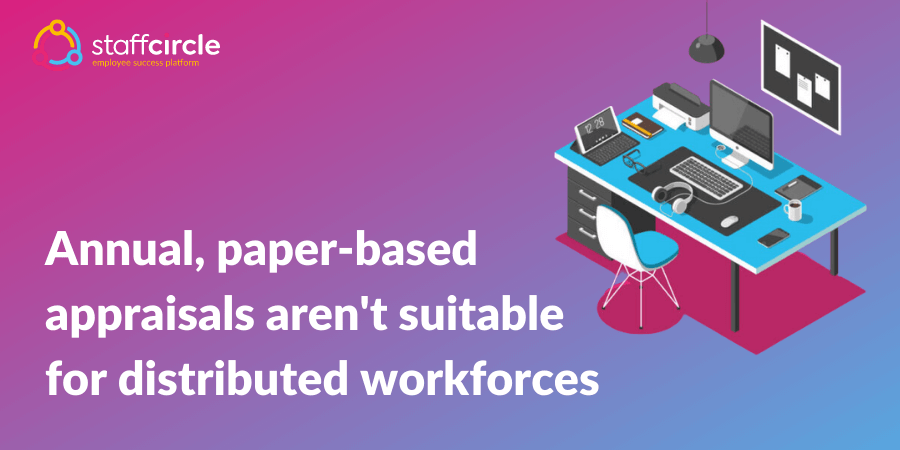
Understanding employee performance in 2025
In 2025, Performance is measured and developed differently.
The world of work has changed, and distributed workforces are becoming the new norm.
Leaders are faced with the challenge of keeping performance management consistent, no matter where their teams work from.
Technology is the key to bridge the gap.
Paper-based solutions do not work across distributed teams. What was originally an admin headache in-office becomes even more complicated when carried out remotely.
It’s time for performance management to go digital.
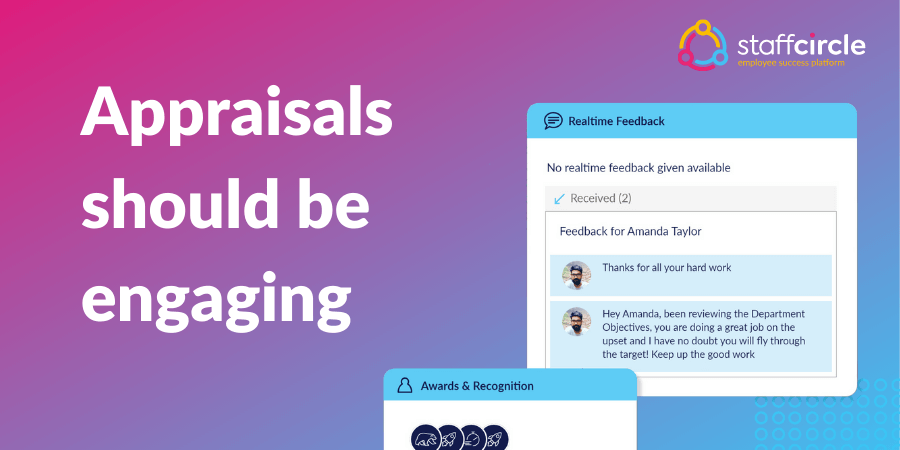
How are performance reviews changing?
Appraisals in 2025 are becoming more engaging.
Rather than a strict once-per-year process, top employers are now introducing a continuous appraisal process.
More frequent conversations between employees and their managers. More documentation of professional feedback. More engaging, professionally fulfilling conversations.
A continuous performance appraisal process is key to better engagement and delivery.
But why the change?
Evolving employee requirements are driving performance appraisal changes. Expectations of how employers provide feedback on job performance is different in 2025.
In 2025, employees expect:
- Personalised progress and development conversations
- Better autonomy over performance expectations
- More frequent constructive feedback to drive better delivery
- Data-driven insights into how their contributions affect the business
- Unbiased line managers that review based on fact
- A simpler, tech-driven way to track their own progress
Employees don’t want to be left in the dark.
They want to work collaboratively with their employer to get the best out of their own skills. To drive their own progress and reach their own goals.
The traditional approach just doesn’t cut it in 2025.
It’s time to say hello to 360 appraisals.
How is the Appraisal Process Different in 2025?
A 360 performance appraisal is the evolution of the traditional appraisal procedure.
A traditional annual review process would look something like the below:
- Leaders set out a timeframe for annual appraisal meetings, create a standard appraisal template and distribute this to managers with instructions and deadlines for completion
- Each line manager holds an appraisal meeting with their team members, discussing their performance and progression over the past year
- Managers assess past performance against the job description to determine each employee’s development and submit it to HR
- An appraisal report is manually compiled to give an overview of company performance
- Leaders use this static data to assess workforce capability, understand future performance potential and discover new ways to motivate employees
It seems like a straightforward process, but if you’re in people management, you’ll know that things never go to plan.
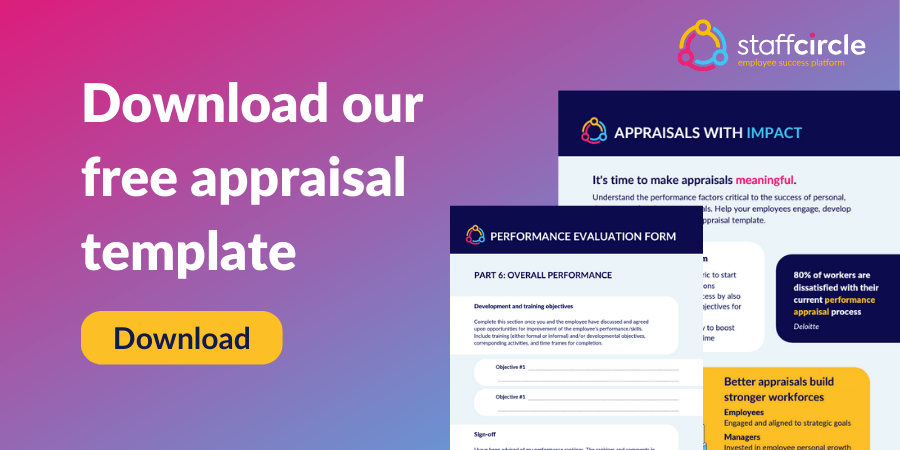
Flaws in the Traditional Performance Appraisal Procedure
There’s a number of potential roadblocks that slow down traditional performance appraisals.
- Keeping tabs on managers and making sure every appraisal meeting is completed in time
- Creating an appraisal form template that can be used company-wide
- Biases in reporting due to the need to reference a year’s worth of past performance
- Compiling hundreds (if not thousands) of paper-based appraisal forms
- Truly understanding how performance management strategies are working
- Updating a written record for every employee and setting future objectives
This is not an exhaustive list. Traditional appraisal systems can take months of dedicated admin time.
It often becomes a box-ticking exercise, rather than an effective performance management strategy.
What is a 360 Performance Appraisal Meeting?
A 360 appraisal cycle puts a stop to fruitless box-ticking.
Understanding, motivating and recognising good performance becomes a day-to-day activity.
360 appraisals are a chance to review feedback from various sources, such as managers, colleagues, and customers.
The offer a more rounded view of an employee’s performance, rather than just the perspective of their direct manager.
In a nutshell, 360 reviews provide more accurate, regular feedback.
Employees, managers and leaders alike are able to understand performance and grow.
The Benefits of Continuous Performance Appraisals
Better results are driven by objectivity.
You can’t be truly performance-driven until you understand your productivity.
A continuous appraisal system provides employees with a more approachable, collaborative management style. Yet leaders reap the rewards of data-driven insight into opportunities and risks.
It’s a no brainer. Make the process more engaging to drive results at all levels.
Appraisals Become More Meaningful
The more meaningful feedback an employee receives, the better their performance.
Specific and actionable feedback enables workers to understand their own progress. They can take ownership of their own development.
Meaningful feedback improves employee motivation and engagement.
They know that their contributions are valued, and understand exactly how their input contributes to business success.
Every piece of feedback provided through an employee success platform can be linked to company mission and values.
360 appraisal systems give you a more rounded view of employee potential.
They make performance appraisals limitless.
360 Appraisals Limit Bias
Moving towards a more modern appraisal approach allows your business to be more objective.
Historically, promotions or pay increases were rewarded based on individual manager feedback. Leaders were reliant on managers to accurately assess high performance and potential.
But every manager is different. Success is treated in markedly different ways by different employees.
A 360 appraisal meeting goes beyond individual managerial opinion. It encompasses feedback from a huge range of sources to deliver an honest and balanced view of employee performance.
It allows leaders to identify high-performance employees who may be overlooked by their manager. The 360 approach highlights potential problems before they become real issues.
A window into the workforce’s true capability, at your fingertips.
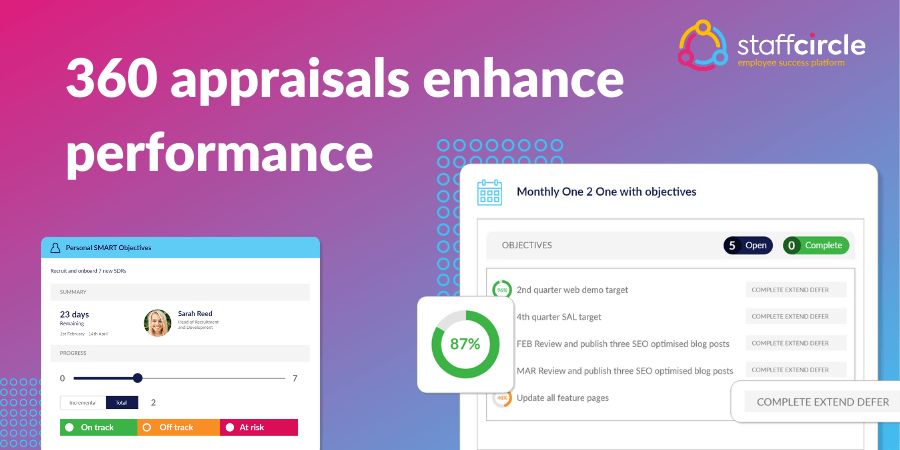
How Continuous Appraisals Affect the Workforce
Better appraisal methods create better performance: business-wide.
No matter your role, a more insightful performance appraisal process will enhance your work.
- Employees can depend on reliable performance and progress conversations with their manager. Granted access to a platform that allows them to take charge of their own performance and development. They know that their growth is taken seriously, and that hard work will be recognised fairly.
- Managers are empowered to lead better team performance. They are given a template for success with built-in tools to help build and grow a high-performing department. They understand how to motivate and lead, with the confidence of proven development solutions at their fingertips.
- Leaders are set free from admin to focus on strategy. Given the power to remain in control of their workforce, not just in charge. They can access in-depth insights that help to build better strategies, backed by real-time data. Able to create a truly powerful and high functioning company.
What Insights Are Included in a 360 Performance Review?
Rather than a memory test, a 360 appraisal is a chance to review data.
At each review, managers and employees can review progress accurately, with real-time insights on performance.
A once per-year appraisal relies on managers and employees to keep track of good feedback, memorable moments and development areas.
A continous appraisal system keeps track automatically, compiling a wide range of activity into an easily accessed overview of progress.
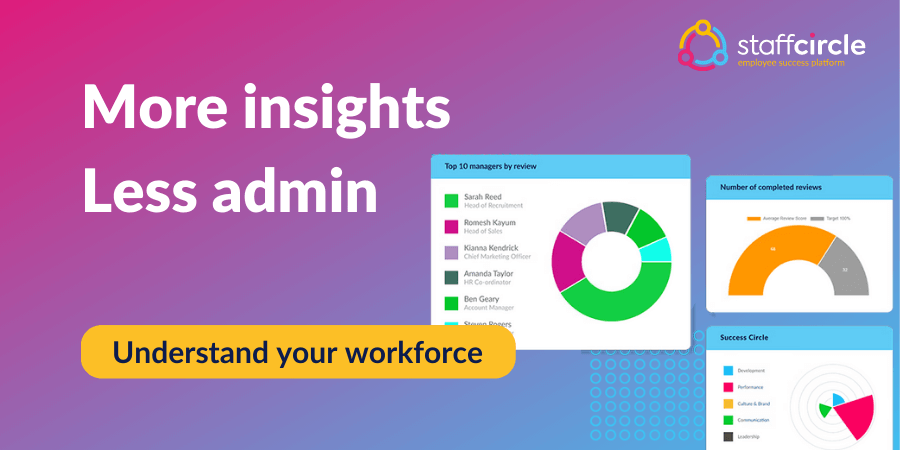
Insights included in a 360 appraisal include:
- Real-time feedback from a manager to mark a job well done
- Feedback from peers to recognise great teamwork
- Awards given by colleagues to celebrate success and cultural alignment
- Reviews from customers that give real-world context to progress
- OKR and SMART goal progress against targets
360 appraisal systems are a dynamic way to track progress and development.
Real-time insights and a range of feedback sources that make it a valuable tool for managers and employees alike.
Use Appraisals to Understand Your Workforce
Understand what truly drives your workforce.
Their motivations, abilities and downfalls.
Appraisal insight shouldn’t be static reports based on performance conversations.
They should be a two way process, managing performance in real-time with confidence.
When you look at actual performance as it happens, you get a better picture of your team. You can build strategies with the confidence of clear, recent and relevant insight.
Modern, 360 appraisals give you the power to build a better business.
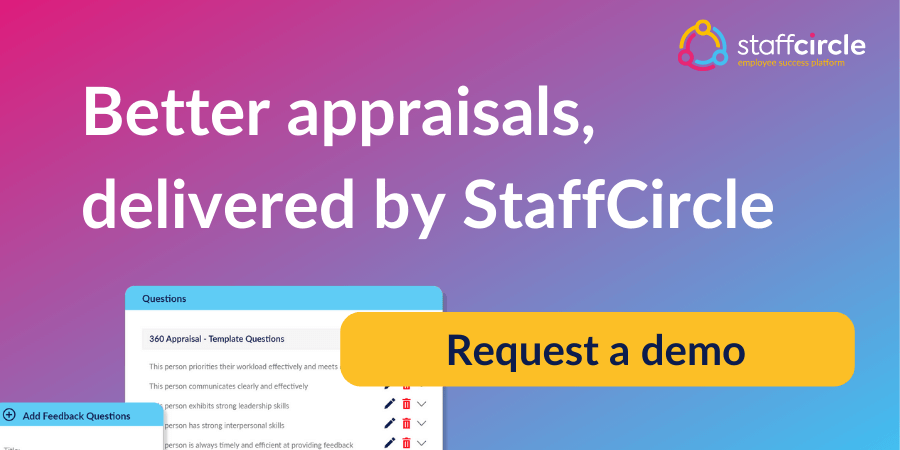
Why Limit Performance With Traditional Appraisals?
Traditional appraisals stifle your ability to truly grow.
Not only do they minimise employee development, but they don’t provide actionable insight.
They’re outdated, solely a box-ticking exercise that offers no true value in the modern workplace.
Keeping performance management consistent across a distributed workforce is impossible without the help of technology.
Continuous 360 reviews enhance the employee experience. More accurate, regular feedback is key to better engagement and delivery.
If you’re ready to make the change to your performance review in 2025, we’re here to support you every step of the way.
Let’s build better employee performance, together.





